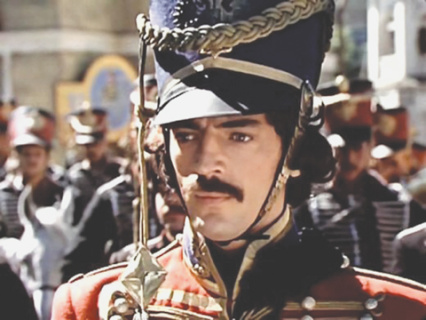
Originating in 15th-century Hungary as a noble militia fighting the Turks, the hussars became a military phenomenon across Europe. Russia was no exception, with its first hussar regiments officially formed in the 18th century under Empress Elizabeth Petrovna, building on foundations laid by Peter the Great. These light cavalry units, known for their dash and daring, would soon carve a unique and enduring legacy in both the military and cultural history of the Russian Empire.
The hussars’ initial foray into large-scale battle during the Seven Years’ War was less than glorious. At the Battle of Gross-Jägersdorf in 1757, inexperienced Russian hussar regiments were overwhelmed by a surprise Prussian cavalry charge and forced to retreat. However, they soon found their calling in the fast-paced, irregular combat of “small wars.” Fighting alongside Cossacks in daring raids, they displayed immense bravery and decisiveness. Their value was proven during the 1760 raid on Berlin and the siege of Kolberg in 1761, where their actions were critical to Russian success.
Much of the hussar’s allure came from their flamboyant appearance. The first hussars in the Russian army, being of Serbian and Hungarian origin, introduced a striking uniform that was quickly embraced. Their attire consisted of a tall fur hat (kiver), a short, lavishly braided jacket (dolman), and a second, fur-lined outer jacket (mentik) worn fashionably slung over one shoulder. These were paired with tightly-fitted trousers (chakchiry) tucked into short boots. Each regiment had its own vibrant color scheme, creating a dazzling spectacle on and off the battlefield. Beyond their uniforms, hussars cultivated a distinct look: they shaved their beards but sported long side-curls and prominent mustaches, disdaining the powdered wigs common in other military branches.
Life as a hussar was defined by more than just warfare. A popular saying held that their world revolved around three great pleasures: women, cards, and feasts. They cultivated a reputation as incorrigible womanizers and dashing figures at society balls. When not on campaign, their time was consumed by unrestrained revelry. Card games like ‘shtoss’ were played with a passion that bordered on obsession, with entire fortunes, estates, and sometimes even lives wagered on a single hand. Settling a card debt was an absolute matter of honor, a concept they held in the highest regard.
These high-stakes games were fueled by copious amounts of vodka, which they believed stirred the blood for amorous pursuits, contrary to the later, romanticized association with champagne. The image of the hussar became synonymous with a life of reckless bravery, passionate excess, and an unshakeable code of honor. This larger-than-life persona was embodied by figures like Denis Davydov, a key commander in the partisan war against Napoleon’s invading army in 1812. His guerrilla tactics, approved by Field Marshal Kutuzov, proved devastatingly effective, making him a national hero and the inspiration for a character in Tolstoy’s “War and Peace.”
The hussar ranks included many of Russia’s most notable 19th-century figures, from poets like Alexander Griboyedov and Mikhail Lermontov to the philosopher Pyotr Chaadaev and the famous female soldier Nadezhda Durova. After the 1917 revolution, the hussar regiments were disbanded, but their spirit survived in Russian culture. Their legacy lives on in popular anecdotes, the verb “to hussar” (gusarit), meaning to act with dashing bravado, and even in the names of card games, forever cementing the image of the fearless, hard-living cavalryman in the collective memory.
